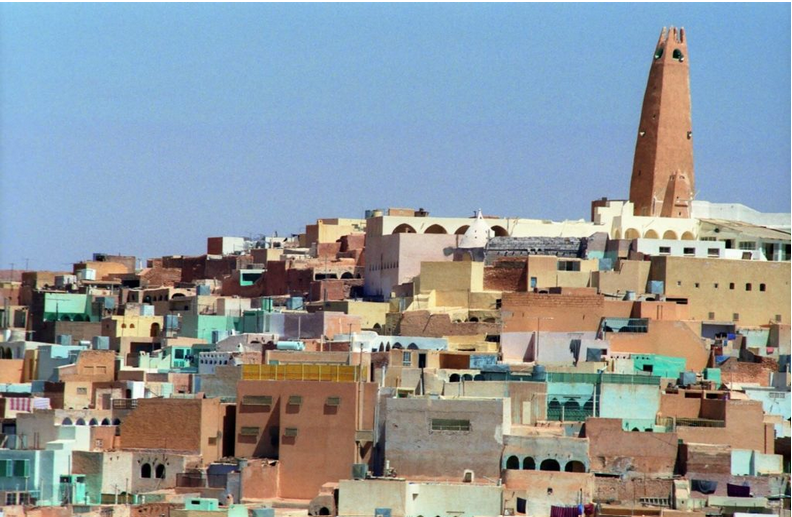The M'zab Valley: 40 years of UNESCO World Heritage label
Classified as universal heritage by UNESCO in 1982, the M'zab Valley (Ghardaïa), a region steeped in millennial history and ancestral traditions, celebrates this year the 40th anniversary of its classification on the World Heritage List.
This consecration goes back to the work of the ancestors who knew how to shape the arid and desert landscape of the region, by creating homogeneous and singular urban centers by their architecture.
Souk Lalla Achou – Ate Isjen (Ate Izjen – Ben Isguen)
The rich heritage and unique architectural style of the region has become for many architects and urban planners “a universal school of architecture” and an attractive space for many researchers and tourists.
This classification by Unesco of this urban space is also the concretization of specific actions of rehabilitation and restoration carried out by the public authorities for its preservation, and also the attachment of the Mouzabite population and local actors to their material heritage, indicated to the APS the director of Culture and Arts of the wilaya, Abdeldjebbar Belahsen.
Kser Ate Bounour
The M'zab pentapolis with its seven ksours (Tagherdait, Ate Mlichet, Ate izjen, Tajnint, Ate Bounour, Beriane and Ighraren) kept its urban structure for several centuries, before becoming a center of interest for the organization United Nations, he said.
This urban heritage, the ancestral hydraulic works, the traditional system of water sharing, combined with an oasis environment, have become attractive points for architects, university researchers and other tourists.
Depuis 1982, date du classement de la vallée au patrimoine mondial, les pouvoirs publics ont engagé diverses actions visant au renforcement du dynamisme d’attractivité touristique de la région, la préservation et la valorisation de son patrimoine architectural et culturel, ainsi que l’embellissement et l’accessibilité des espaces patrimoniaux.
Une centaine d’actions de restauration et de revitalisation du patrimoine architectural et autres monuments historiques ancestraux, affectés par les aléas du temps, ont été réalisés dans la région, a fait savoir Mohamed Alouani, responsable chargé du patrimoine à la direction de la Culture de Ghardaïa.
The Great Minaret of Kser Tagherdait (Ghardaïa) | Source: dilation intervals Blog
All of these restoration and rehabilitation operations were carried out in close collaboration with the associative fabric, he explained, affirming that “more than 3,000 traditional houses, the squares of the Souk, funerary monuments, prayer and mosques have been rehabilitated and restored to preserve this unique heritage”.
The M'zab valley bears witness to an "intelligent" urban civilization created for centuries, according to Dr. Ahmed Nouh, notable and president of the Amidoul foundation, initiator of the project to build the new Ksar of Tafilelt, located near Ate Izjen.
Ksar Tafilelt: an eco-citizen city at the gates of the Algerian Sahara
The Amidoul foundation wants through this new ksar of 1,050 dwellings, containing a population of more than 5,000 souls, to mark, just as one did the ancestors, the history of the region, by building with local materials and by combining architecture and sustainable development, with a particular interest in preserving the environment and living well together, explained its president.
Source: websites





